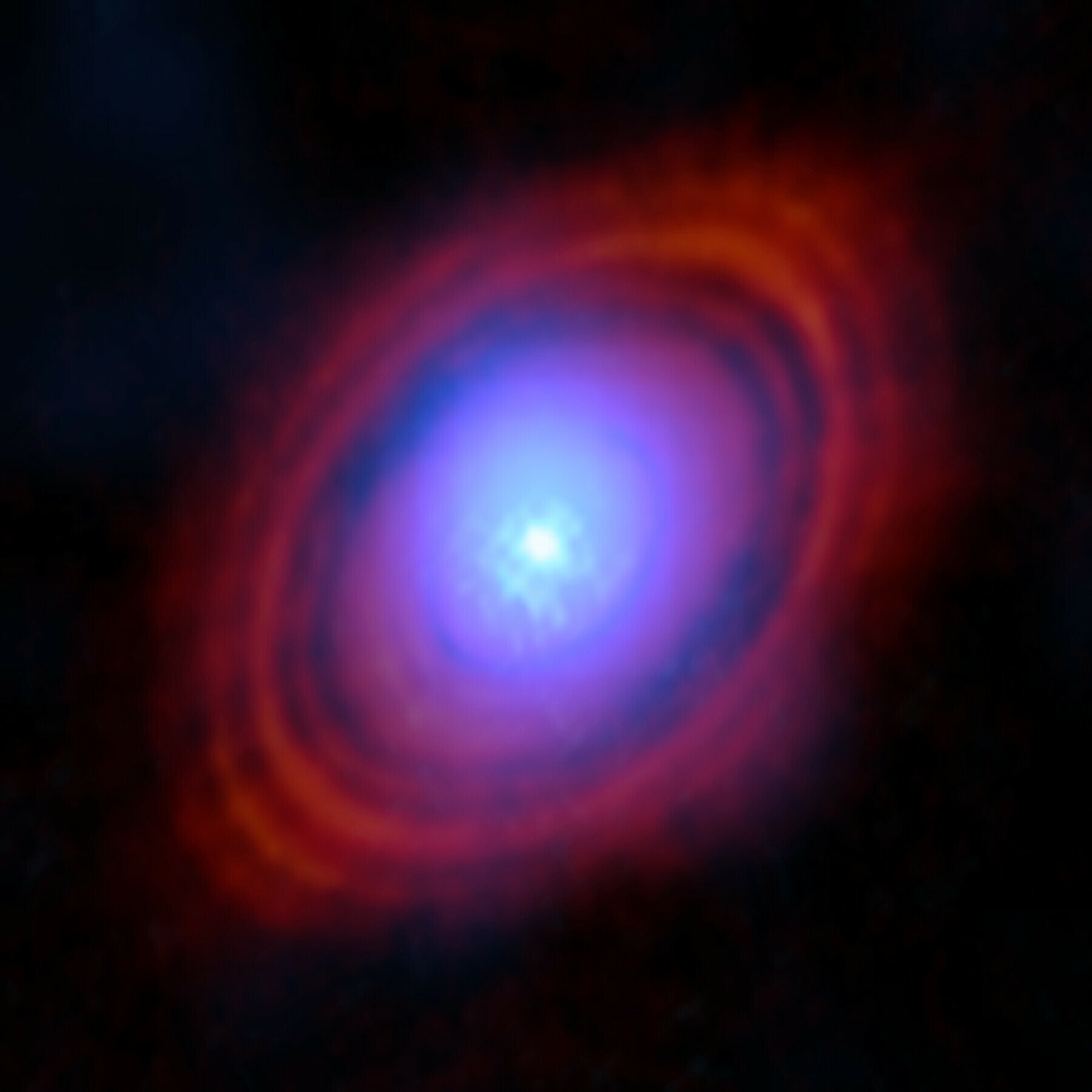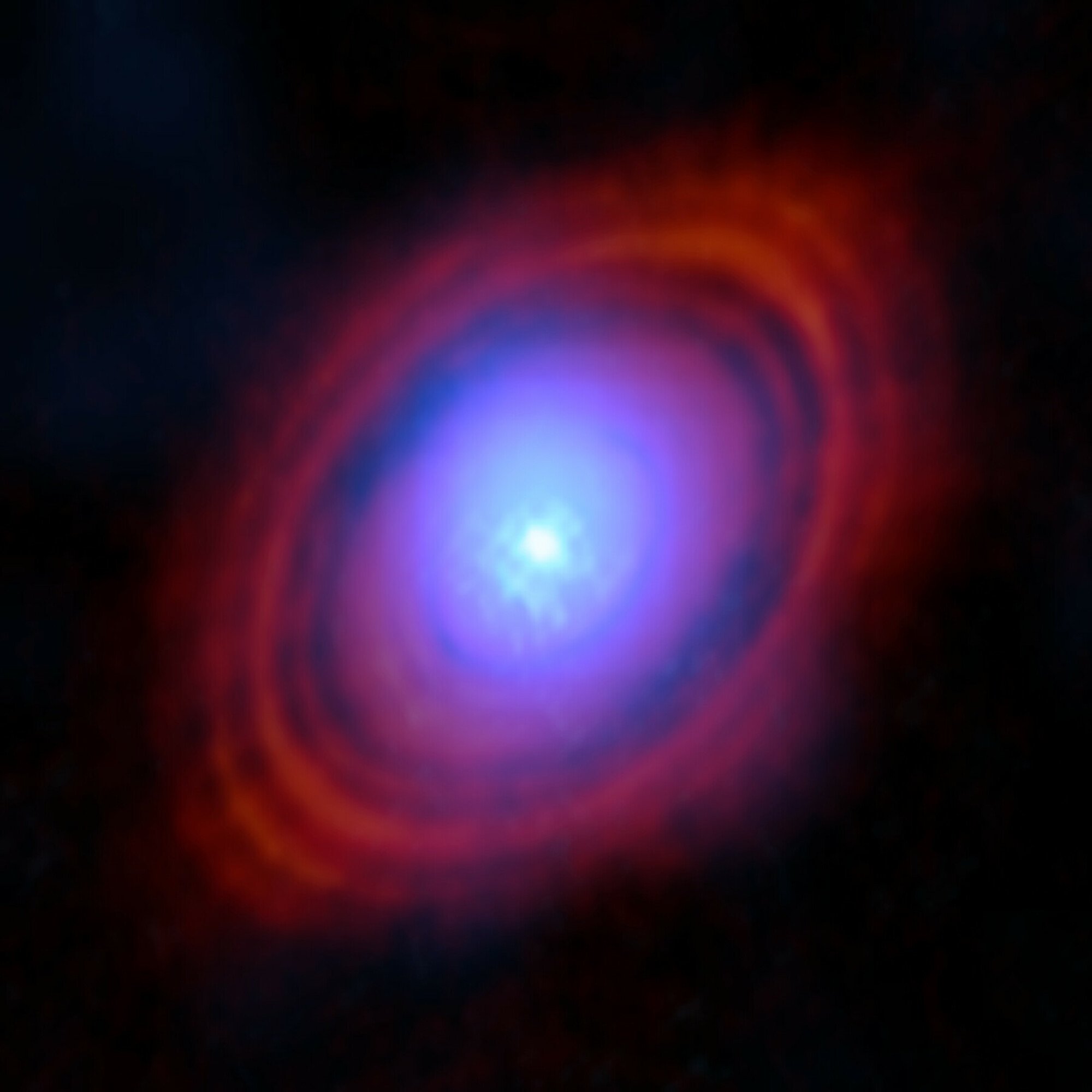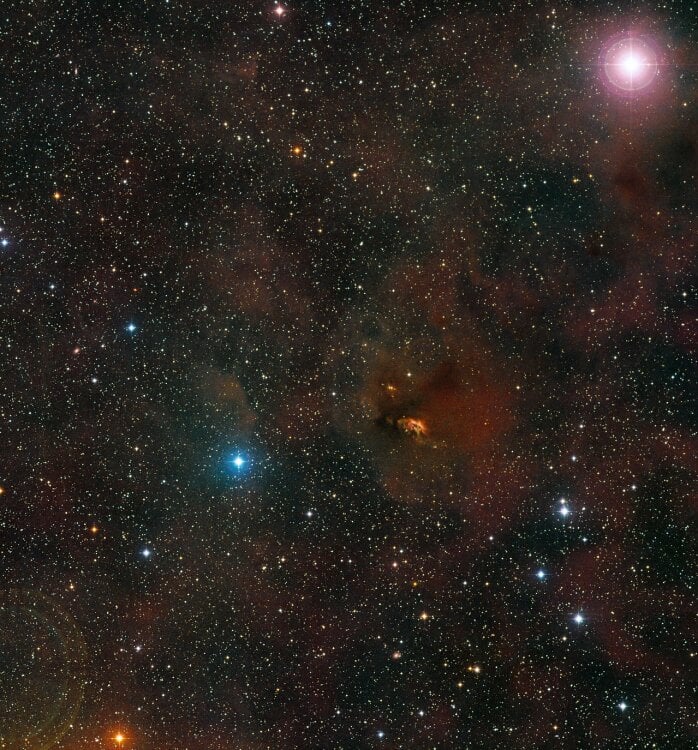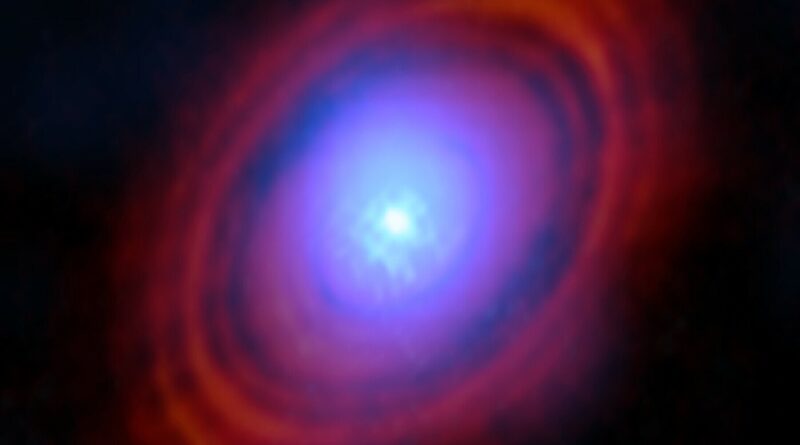Scientists zoom in on distant solar system. It’s teeming with water.

Astronomers are excited about this one.
Using a sprawling astronomical array in the lofty Chilean desert — the Atacama Large Millimeter/submillimeter Array (ALMA) — scientists found huge volumes of water around a young, developing solar system (technically still in its “protoplanetary disk” phase). The star, HL Tauri, is located 450 light-years away in space. Yet in the disk around HL Tauri, the powerful observatory was able to spot at least three times the amount of water contained in Earth‘s oceans.
“It is truly remarkable that we can not only detect but also capture detailed images and spatially resolve water vapour at a distance of 450 light-years from us,” Leonardo Testi, an astronomer at the University of Bologna who worked on the observation, said in a statement.
But that’s not all.
In the inner disk of material churning around the young star is a visible gap — an indication of where a planet could be forming. That’s where the water is.
“I had never imagined that we could capture an image of oceans of water vapour in the same region where a planet is likely forming,” Stefano Facchini, an astronomer at the University of Milan who led the research, explained. The research was recently published in the science journal Nature Astronomy.
“I had never imagined that we could capture an image of oceans of water vapour in the same region where a planet is likely forming.”
In the image below, the blue-colored regions show where the water molecules exist. The red-colored areas are rings of dust orbiting the star (HL Tauri) that resembles our sun (when it was much younger).
The ALMA telescope array, located at 16,597 feet (5,058 meters) in the profoundly dry Atacama, is an array of 66 telescopes that work in unison to effectively create a sprawling radio telescope. Radio waves, which are a type of energy or light naturally produced by objects all over the cosmos (like visible light or X-rays), are captured by ALMA’s large antennae.


Over the coming millions of years, a likely forming planet may incorporate this water as the molecules freeze onto dust particles, which can amass into the bigger objects that form planets.
It’s much too early to say if a water world may one day exist around the star HL Tauri. But astronomers have found evidence of ocean-covered planets in the cosmos. And it’s possible that watery worlds and moons, like Enceladus and Europa in our solar system, are common objects in our Milky Way galaxy.
